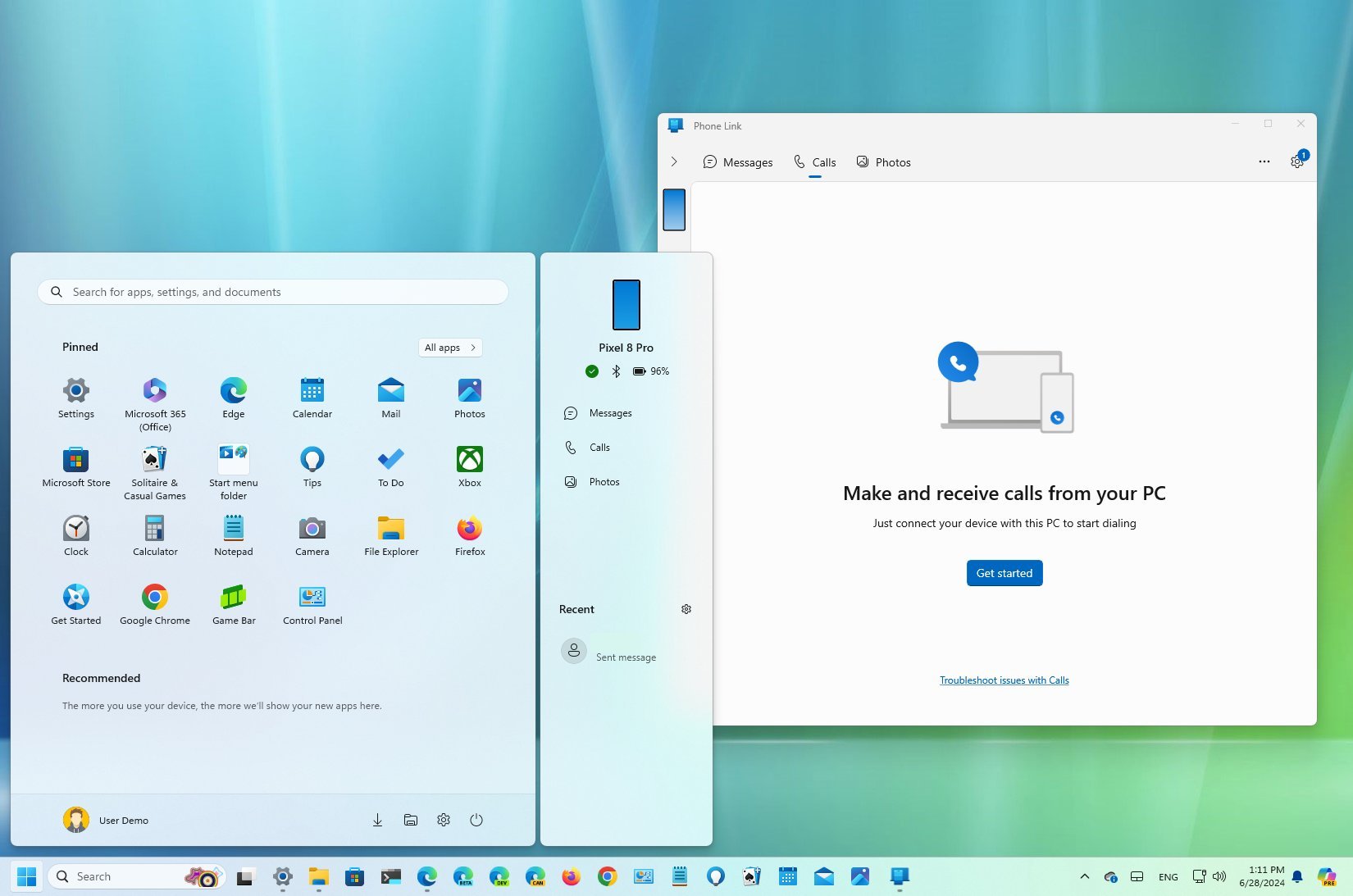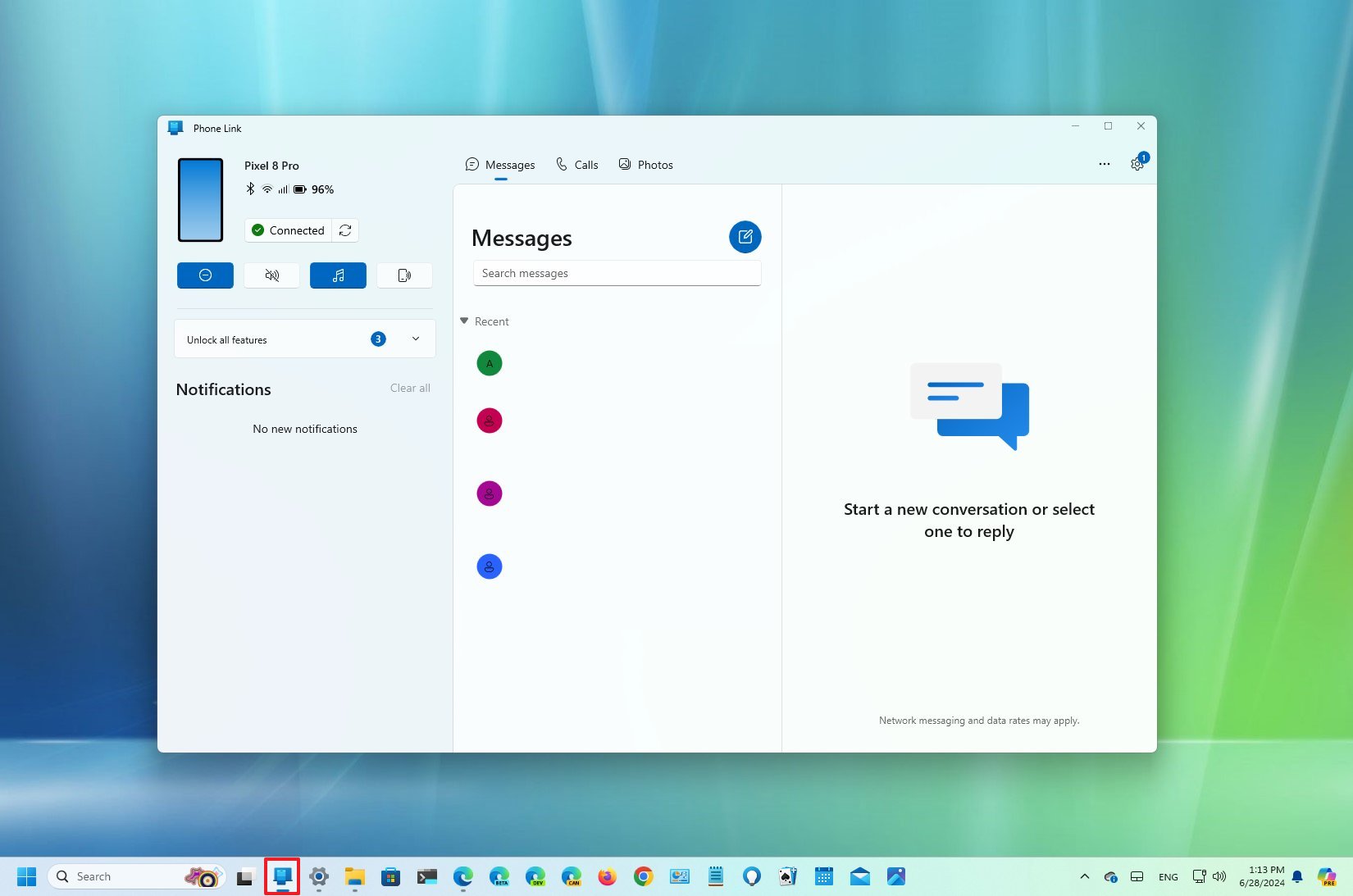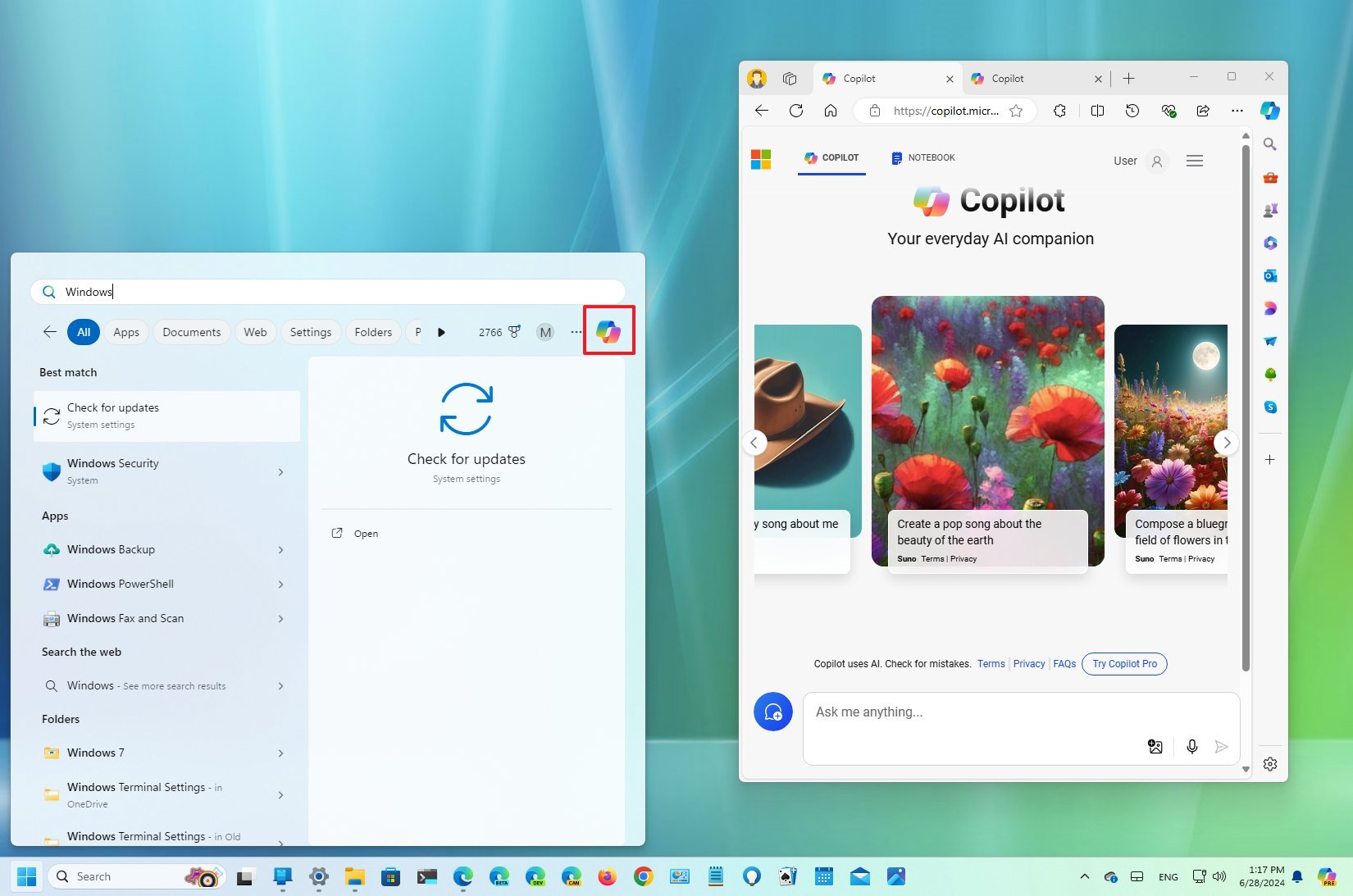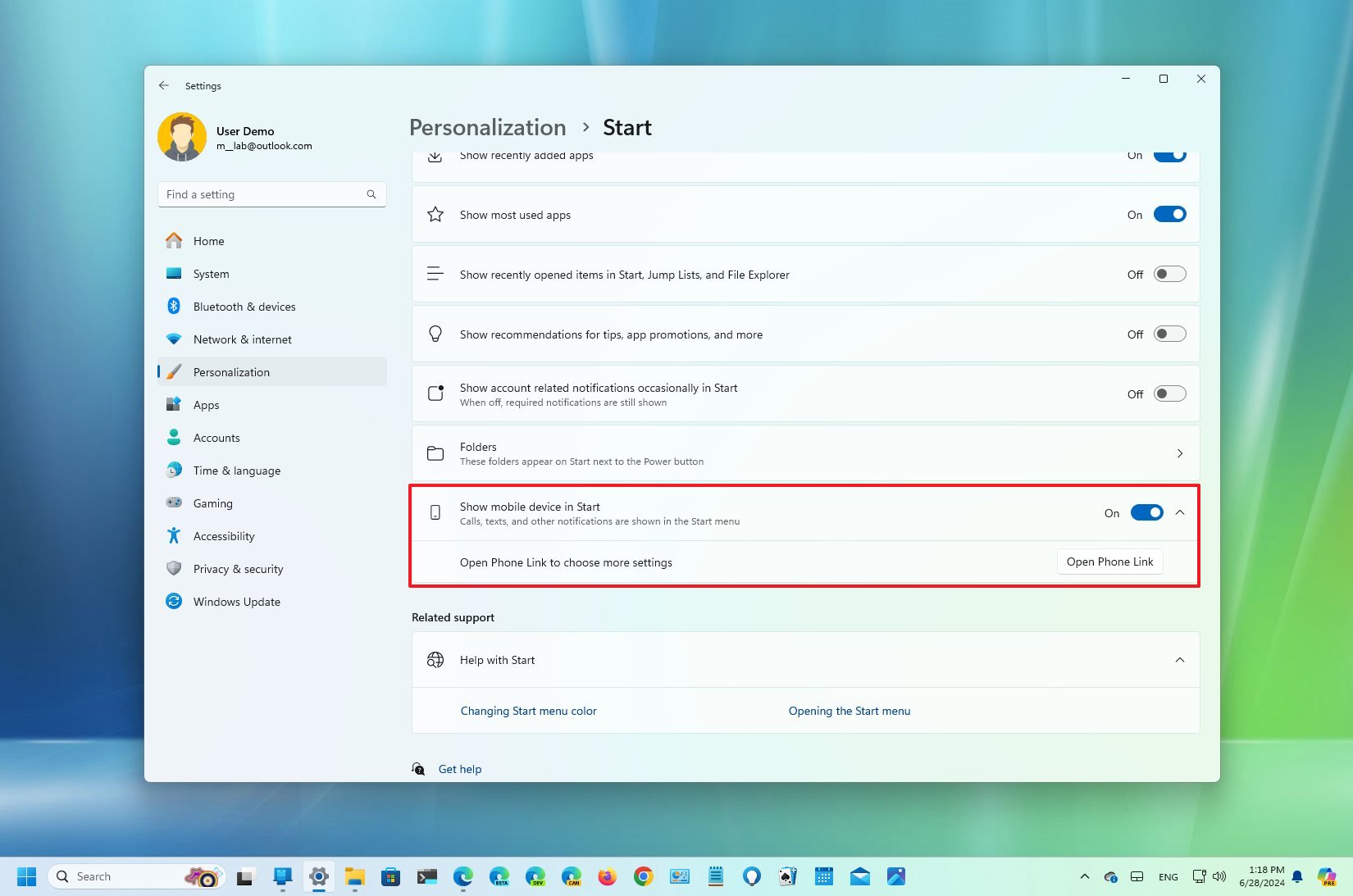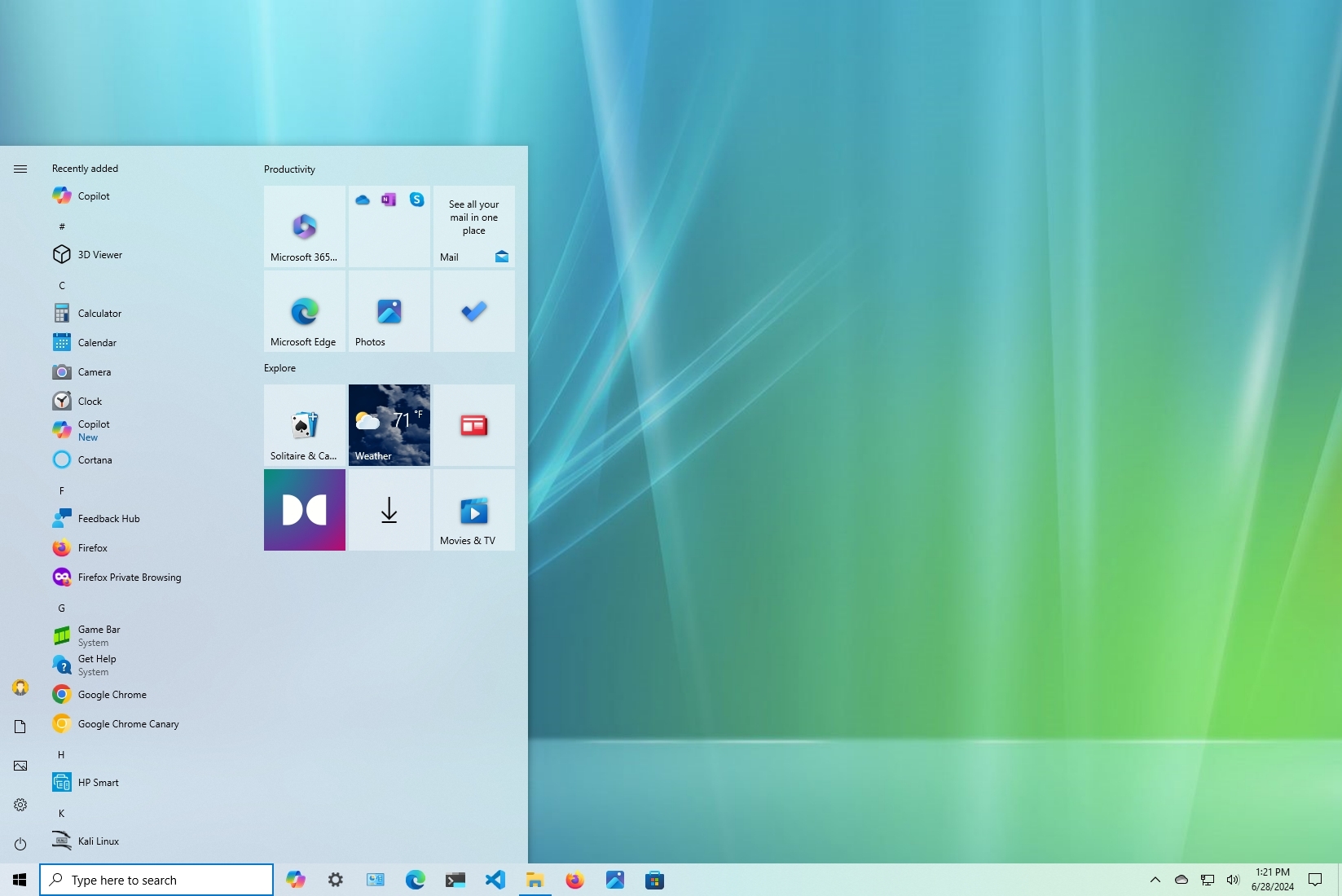Windows 11's new Start menu sidebar for Phone Link is unnecessary and only adds more clutter
Microsoft is building a new sidebar for the Start menu that isn't very functional and adds questionable interface elements.
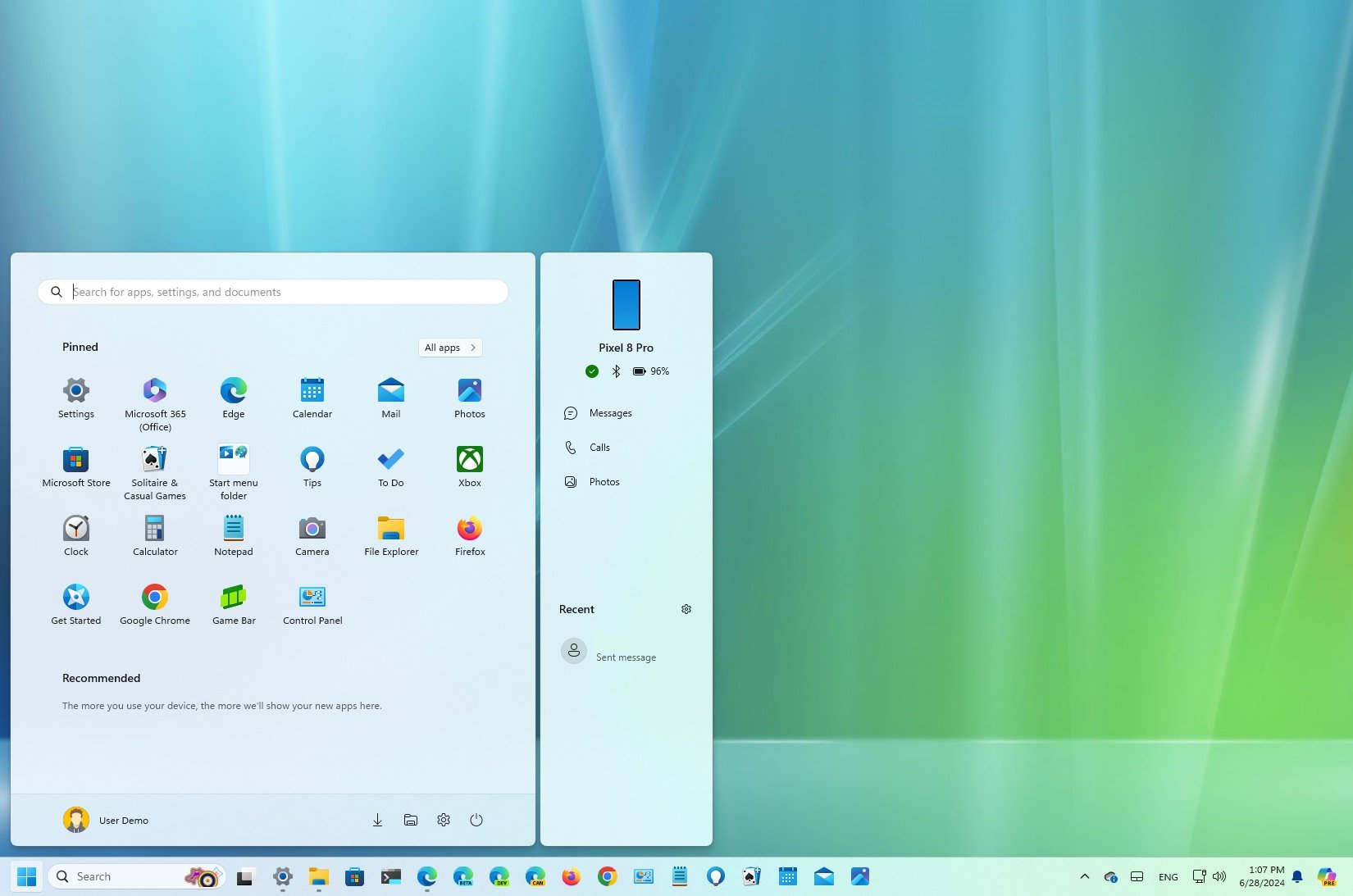
Microsoft recently started rolling out a preview of the new floating sidebar experience for the Start menu, which brings direct access to your mobile device using the Phone Link app on Windows 11. However, this feature doesn't seem to be the best approach or even necessary, and here's why.
The problem
First, the company touts the experience as a feature that allows you to stay connected and effortlessly access your mobile device. However, the interface is nothing more than a collection of links to features inside the Phone Link app.
The interface dynamically shows a few notifications from emails and messages and some phone details like battery and Bluetooth, but nothing more. You cannot interact with your messages, photos, or calls. Anything you click will open the Phone Link app on that specific feature, including opening a photo, sending or reading a text, or making and receiving calls.
In other words, aside from the few alerts, you cannot do anything with this experience since you still have to open the Phone Link app to perform any task.
Also, if your phone is already connected to your computer, you probably already have the Phone Link app running on the desktop. As such, having multiple entry points for the same features seems redundant. Furthermore, remember that once you set up your phone, notifications will appear on the desktop and in the "Notifications" panel.
Even further, most users keep their most frequently used apps pinned in the Taskbar, which means that trips to the Start menu are less frequent. Therefore, if you depend on this integration to access your phone, you'll have to access the Start menu more often. Otherwise, you'll be better off using the Phone Link. (Personally, sometimes, I go days without opening the Start menu.)
I understand this is an early preview, and the design might change in the future. However, Microsoft has a history of calling "integration" simple interface elements that only provide links to drive users to other apps and services, which makes me skeptical and wonder if we're not already seeing the final design of this feature.
All the latest news, reviews, and guides for Windows and Xbox diehards.
For instance, when the Copilot (formerly known as Bing Chat) feature was added to the operating system, the company marketed it as an integration. However, it was simply a button that opened the Microsoft Edge browser on the Copilot web page. (To this day, clicking that "Copilot" button from the Windows Search homepage behaves like a link that opens the chatbot AI on the web browser.)
The other issue I notice often is that even though the company rolls out early previews of new features to testers in the Windows Insider Program to get feedback, here is when I think many times Microsoft misses the opportunity to make a feature awesome from the get-go.
The reason is that the company usually quickly builds and rolls out new features. As a result, sometimes, these features are rushed to users and later improved through updates, but more often than not, when those updates arrive, users are no longer interested because the feature wasn't complete from the beginning, and then we end up with features getting deprecated.
We have seen many features added and later removed, such as Your People, Meet Now, Chat, and the Copilot sidebar — to name a few.
The good news is that the "Start" settings page also has a new "Show mobile device in Start" toggle switch to turn this feature on or off when connecting a phone to your computer.
The solution
In my opinion, the Phone Link sidebar for the Start menu is unnecessary since it's redundant and adds more clutter. In this particular case, Microsoft should be working on bringing back Live Tiles within the menu, the ability to resize the Start menu, or other ways to customize the experience without adding more clutter.
However, if the company is internally planning to open up the sidebar to allow other apps to show different elements, then Microsoft should make a better effort to communicate while developing new features. (I still think the floating sidebar is not a good interface design approach.)
For example, Microsoft should say something along the lines of: This is the design we have today, and you can now perform these actions. However, our plan is to build these tools and settings so you can perform these tasks and make the feature work this way. Also, here's a mockup of the final version we intend to release.
If the company were to lay out the plan for a feature clearly, users wouldn't be quick to rush to a conclusion about a feature.
It's important to note that an early version of this new sidebar interface for the Start menu was previously found in preview builds of Windows 11, and the design suggests that the company may not limit the sidebar to the Phone Link app. Instead, the feature will open to third-party apps, so developers can add widgets and other functionalities to the right or left side of the Start menu.
The Phone Link sidebar for the Start menu is currently available for users with devices enrolled in the Beta Channel. It's only available for Android phones, but the company is also working to bring the support to iPhone.
More resources
For more helpful articles, coverage, and answers to common questions about Windows 10 and Windows 11, visit the following resources:
- Windows 11 on Windows Central — All you need to know
- Windows 10 on Windows Central — All you need to know

Mauro Huculak has been a Windows How-To Expert contributor for WindowsCentral.com for nearly a decade and has over 22 years of combined experience in IT and technical writing. He holds various professional certifications from Microsoft, Cisco, VMware, and CompTIA and has been recognized as a Microsoft MVP for many years.
